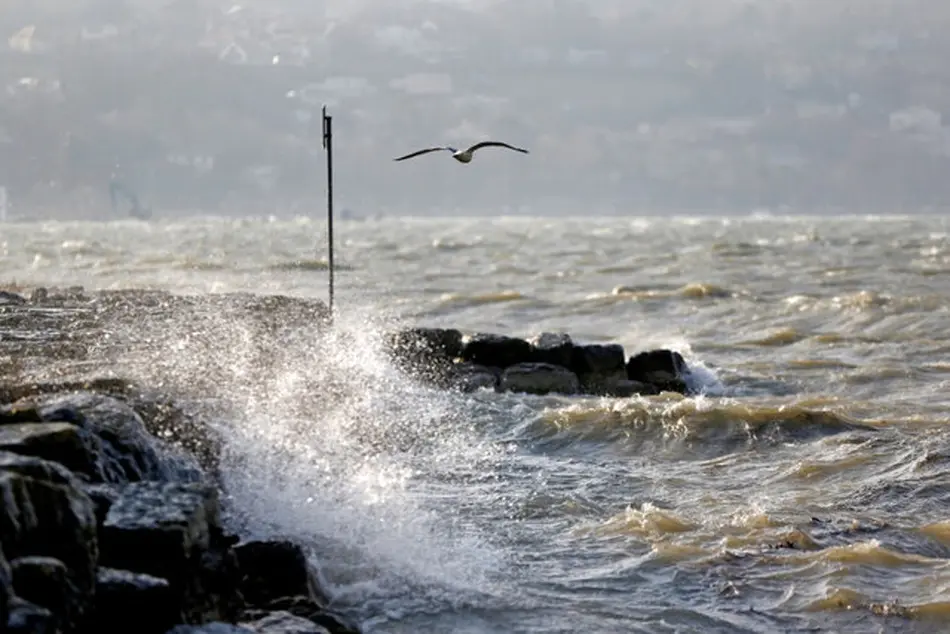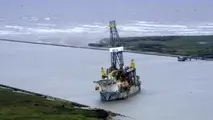Climate Change Makes Turbulence An Increasingly Pressing Issue
Turbulence encounters can degrade passenger comfort—or, in the most severe instances, injure and kill aircraft occupants. Hence the importance of forecasting or detecting turbulence so pilots can avoid it.

Turbulence encounters can degrade passenger comfort—or, in the most severe instances, injure and kill aircraft occupants. Hence the importance of forecasting or detecting turbulence so pilots can avoid it. While engineers have made progress in analyzing the threats of convective weather (or thunderstorm formation), clear air turbulence is not associated with moisture, and existing systems cannot detect it. The unpredictable menace remains aviation’s nemesis.
The issue of turbulence is gaining attention with climate change. Rising global temperatures mean warmer air, which can hold more moisture. This boosts the chance of thunderstorms, the UK Royal Meteorological Society said in July 2023. Thunderstorms are associated with all levels of turbulence intensity.
Meanwhile, clear air turbulence (CAT) linked to jet streams is growing. In most regions affected by the subtropical jet stream in the Northern Hemisphere, the probability of CAT will increase with each degree of warming, according to a study the American Geophysical Union published in July. Researchers especially pointed to East Asia, the Middle East and North Africa.
Due to the growing threat, the air transport industry needs to accelerate research efforts to better predict, detect and possibly even cancel out inflight turbulence.
The foremost form of turbulence comes from convection. “Winds are shifting in large thunderstorm clouds; they suck in moisture and distribute moisture in the vicinity,” says Ven Sishtla, associate director of systems engineering and radar systems at Collins Aerospace. As a thunderstorm cell generates turbulence downwind, aircraft crews try to avoid those cells by flying around them upwind.
At the top of a cumulonimbus cloud, the tropopause—where the troposphere meets the stratosphere—stops ascending winds, Meteo France Forecast Engineer Alexandre Flouttard adds. “That phenomenon generates circular gravity waves,” he explains. “The resulting turbulence can hit aircraft, which usually fly just below the tropopause.” Weather models do not forecast gravity-wave-induced turbulence very well because of its small scale, but thunderstorm alerts include it as a hazard.
Unlike the turbulence that convective weather generates, CAT has various sources. Most of the time, this form of turbulence can be found at high altitude and is often linked to jet streams. “In the Northern Hemisphere, at mid latitudes, jet streams generally are westerly winds, and crews commonly use them to gain ground speed,” Flouttard says. “Around the core of those jet streams, turbulence may take place, both on the polar side and under the core. The faster the jet stream, the more intense the turbulence.”
Mountainous terrain generates another kind of CAT. When wind blows toward a mountain range, it creates waves and associated turbulence on the other side. Alternating low- and high-pressure areas can create wind shear, another source of CAT. Finally, aircraft generate wake vortices, which are sometimes partly visible through condensation at wingtips. The wake turbulence of a large aircraft may destabilize a smaller one.
CAT is one of the biggest contributors to turbulence hazard. “The aircraft is flying in blue skies, and suddenly you get hit,” says Sishtla. Moreover, this can cause challenges in air traffic management. If CAT takes place in high-traffic airspace, a number of aircraft crews will request a flight level change. Delays may ensue.
Weather forecasts do indicate jet streams and associated CAT. “We release forecasts every 3 hr., and each map is issued 4 hr. before its validity period,” Flouttard says. “Forecasters include areas with a potential for jet stream-generated turbulence, with lower and upper limits. We also issue alerts for severe turbulence when all models predict it or based on pilot reports.”
High-resolution Earth observation satellites can see straight cirrus clouds, which suggest the presence of a jet stream and associated turbulence. They do not give clues on turbulence intensity, however, Flouttard notes.
A 20-25-kt. wind blowing perpendicular to a mountain range will generate CAT downwind, sometimes hundreds of kilometers away. Lenticular clouds indicate an orographic wind area, but not the turbulence’s intensity.
Meanwhile, locating wind shear phenomena can be difficult, particularly when high-pressure systems grow rapidly.
Based on those indications, weather forecast organizations issue CAT forecast maps for air traffic controllers, then put in place regulation measures to avoid congestion, Flouttard says.
Combined with forecasts of convective weather, this gives pilots a heads-up on associated turbulence. Pilots and flight attendants may discuss turbulence in their preflight briefing, Sishtla explains. “They use [Significant Meteorological Information] alerts, turbulence forecast charts, pilot reports and the graphical turbulence guidance models available in some areas,” he says. “Pilots study whether they may find turbulence along their flightpath.”
Turbulence strength can be categorized as light, moderate, severe or extreme. One metric is the strain a passenger feels from the seat belt. For the crew, extreme turbulence can cause a loss of control.
Inflight turbulence detection is valuable for short-term decisions in the flight deck. Detection relies on airborne weather radars found on all commercial aircraft and most business aircraft. A weather radar uses moisture to sense water droplet movement through the Doppler effect.
“We work with meteorologists at Texas A&M University in Corpus Christi,” Sishtla says. “To update our algorithms, we maintain that relationship between radar specialists and weather experts.”
Turbulence appears in magenta on navigation displays. “If the crew sees solid magenta, severe turbulence may take place in the area, which the crew should avoid,” Sishtla says. “A speckling of magenta shows weaker turbulence that may affect passenger comfort.”
In principle, the larger the radar antenna, the higher the resolution and the greater the detection range. “The antenna of Honeywell’s RDR-4000 weather radar can be up to 30 in. in diameter,” Honeywell Radar Fellow Roland Szeto says. “Customers may want to choose the largest diameter the radome of their aircraft can accommodate.”
Large business jets, such as Bombardier Globals, high-end Gulfstreams and Dassault Falcons, can accommodate an RDR-4000 with a 18-in. or 24-in. antenna. Nevertheless, the buyers of those business aircraft may choose the RDR-7000, with an 18-in. antenna. “The RDR-7000 is lighter and newer,” Szeto says. “And we are working on a 24-in. antenna for the RDR-7000.”
“In flight, the weather radar provides tactical (or short-distance) and strategic (or long-distance) guidance about where strong convective turbulence is going to be,” Collins’ Sishtla says. A weather radar can operate on the ground, though a safety system prevents it from working next to an airport terminal and sending powerful radar waves into the building. For example, a business aircraft sitting on a remote airfield may “see” turbulence dozens of nautical miles in front of it.
For strategic guidance, a Collins weather radar can start threat analysis 160 nm from a thunderstorm. At that distance, it may not be able to detect turbulence using the Doppler effect. It may still perceive some characteristics inside the thunderstorm and provide valuable information. “On their navigation display, the crew will see the thunderstorm’s core depicted in red, and a black area speckled with red around it,” Sishtla says. “That area represents hazards that can exist 30-40 km [(16-22 nm)] outside the storm’s core.”
For tactical guidance, weather radars, such as Collins’ MultiScan ThreatTrack, do use the Doppler effect. The system may give a 5-min. warning to the crew.
The normal turbulence detection range for a Honeywell radar stands at 40 nm; the extended range, 60 nm. “The newest mode, long-range inference, can predict the presence of severe turbulence up to 120 nm ahead, based on a convective weather reflectivity algorithm,” Szeto points out. “From the middle of the detection range, around 30 nm, we blend Doppler and inference. Above 60 nm, we rely on inference only.”
Navigation displays clearly show convective weather. On Boeing aircraft, Honeywell offers convective cell tracking and trending. As reflectivity intensifies, the system can determine the direction and speed of the cell and display the speed vector. It can also see whether the cell is growing.
A different way of spreading information on turbulence relies on sharing pilot reports. Exchanges on air traffic control radio frequencies may help. One crew may mention hitting turbulence in a given area at Flight Level 350 (35,000 ft.), and another may decide to deviate or descend in altitude based on multiple reports of turbulence in the area.
One app pilots may use with their electronic flight bag, SkyPath, gathers data from accelerometers installed on their tablet. Collins is promoting the tool, developed by the eponymous Israeli startup.
“SkyPath sends the data to a ground station,” Sishtla explains. “Data collection and processing give a composite view of where turbulence is, based on what other aircraft have encountered. So SkyPath’s principle can be likened to crowdsourcing of turbulence information.”
Aireon says it has developed a method to detect severe turbulence encounters at a global scale in near-real time, thanks to its space-based ADS-B data provision service. The company released a white paper in 2024 describing how the service would factor in aircraft position, altitude and velocity reports. Based on that ADS-B data, Aireon states, it can infer the encounter with turbulence.
Future pilots might rely on new detection methods. “To detect clear air turbulence, research work is ongoing on short-wave lidars,” Sishtla says. “If they could sense turbulence 12 nm ahead, that would give time for the crew to react.”
Lidars, however, are not mature yet for that longer detection range. Their size, performance and cost do not meet the requirements of commercial aircraft design. Nevertheless, the technology is improving. “Four years ago, lenses were too bulky and have since significantly decreased in size,” Sishtla notes.
Austria-based Turbulence Solutions is in the final stages of developing a turbulence-canceling system for light aircraft. “Our system generates counter-turbulence via small control surfaces, thus canceling 80% of the vertical acceleration,” says Andras Galffy, CEO and head of research and technology.
“We measure a differential in pressure—less than 1 [pascal]—just ahead of the wing,” Galffy explains. Telescopic booms equal to one wing chord length are installed at mid-wing on each side and hold the pressure sensors. “The 50-millisec. lead gives the system time to react by actuating small control surfaces,” he says. These surfaces, also called flaplets, hinge on the existing flaps’ trailing edge.
With the control unit and associated servomotors, the flaplets can cancel moderate turbulence by up to 0.5g or reduce stronger turbulence by 0.5g, Galffy says.
“Our system will receive its certification from the Austrian civil aviation authority, on the [Shark.Aero] Shark 600 ultralight two-seater, in the second quarter,” he predicts. “We certify it as a comfort feature. We don’t guarantee function. And if it fails, you can fly without it.”
Certification flights on the Shark 600 have been underway since late 2023. Turbulence Solutions has increased complexity gradually and is working on a European Union Aviation Safety Agency CS-23 certification for an unnamed four-seater.
“Next, our system could be adapted to business turboprops,” Galffy says. “That class of aircraft tends to fly in the lower layers, where turbulence is more frequent. Later, on large commercial aircraft, our technology may use the fly-by-wire system, including primary control surfaces such as elevators and ailerons. At that stage, we will guarantee function.”
Airbus has been working on a similar approach under its eXtra Performance Wing research and technology program, with a lidar to detect turbulence and the wing reacting automatically. Airbus aims to enable higher-aspect-ratio wings without requiring reinforcement to withstand strong turbulence.
